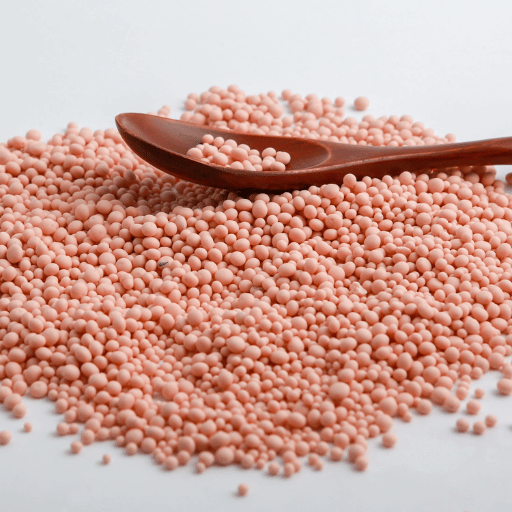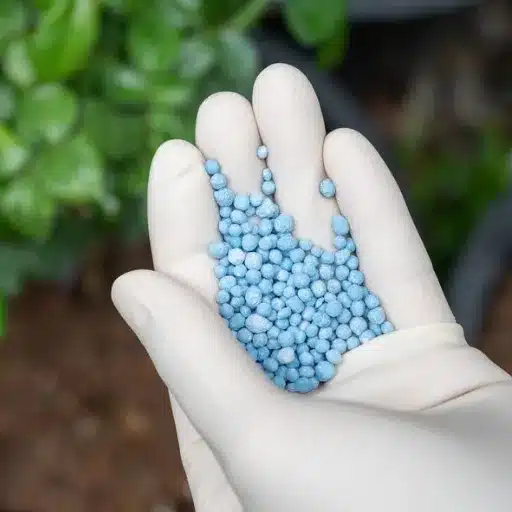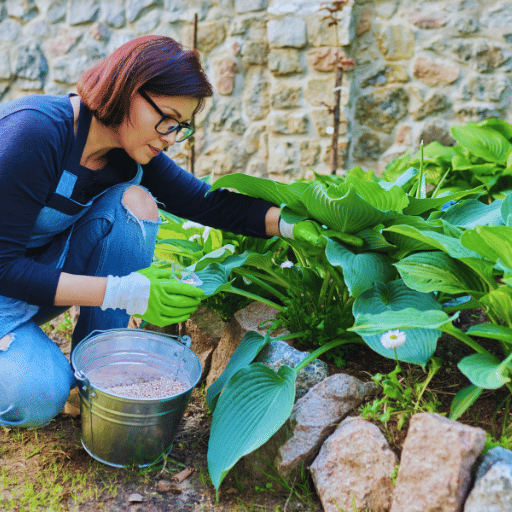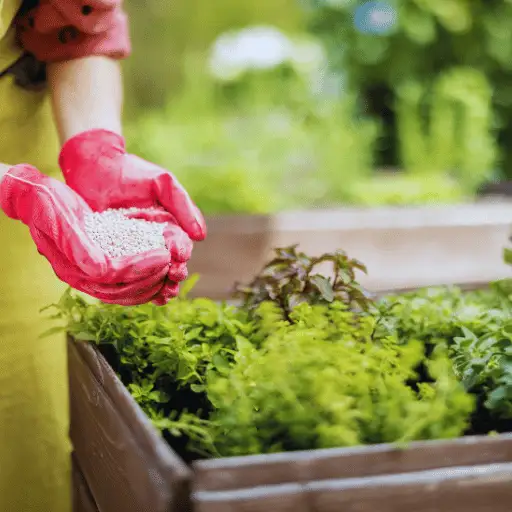The 12-24-12 fertiliser is a specific blend that contains 12% Nitrogen (N), 24% Phosphorus (P), and 12% Potassium (K). These numbers represent the NPK ratio, which indicates the percentage of each nutrient in the fertiliser mix. This fertiliser is known for having a higher phosphorus content, making it particularly beneficial for certain types of plants, especially those in need of strong root development and abundant flowering.
Purpose of Each Nutrient
- Nitrogen (12%): Nitrogen is essential for promoting lush, green foliage and overall plant growth. It is a key component of chlorophyll, the pigment responsible for photosynthesis.
- Phosphorus (24%): The high phosphorus content in 12-24-12 fertiliser plays a crucial role in root development, flower formation, and fruit production. It encourages plants to establish a strong root system, which is vital during the early stages of growth.
- Potassium (12%): Potassium helps strengthen the plant’s overall health by enhancing disease resistance, improving water retention, and aiding in the development of sturdy stems and branches.
Where It’s Commonly Used
The 12-24-12 fertiliser is commonly used in gardens, flower beds, and lawns, particularly for plants that need a boost in root development or are at the flowering or fruiting stage. It’s ideal for vegetables, flowering annuals, and bulbs, as well as for newly transplanted plants that need extra phosphorus to establish strong roots.
The Benefits of 12-24-12 Fertiliser for Your Garden
Encourages Strong Root Development
One of the standout benefits of 12-24-12 fertiliser is its ability to encourage strong root development. The high phosphorus content (24%) is particularly effective in supporting root growth, making it an excellent choice for newly planted seedlings, transplants, or any plants that need to establish a solid root system. As horticulturist Dr. Linda Brown explains, “Phosphorus is the key nutrient for root expansion and development, ensuring that plants can efficiently absorb water and nutrients from the soil.”
Balanced Nutrition for Blooming Plants
The balanced combination of nutrients in 12-24-12 fertiliser makes it ideal for blooming plants. The nitrogen supports lush foliage, while the phosphorus promotes flowering and fruiting. This balanced formula helps flowering plants like roses, petunias, and vegetable crops like tomatoes and peppers to produce vibrant blooms and healthy fruits. By providing a steady supply of nutrients, this fertiliser ensures that your garden plants have everything they need to thrive during the blooming season.
Improves Overall Plant Health
The inclusion of potassium (12%) in the 12-24-12 fertiliser plays a crucial role in improving overall plant health. Potassium helps regulate water uptake, enhances disease resistance, and contributes to the strength of plant stems and branches. It also aids in the development of better-quality fruits and flowers, making it an all-around beneficial fertiliser for ensuring your garden plants are vigorous, resilient, and capable of withstanding environmental stressors.
When and How to Apply 12-24-12 Fertiliser
Ideal Timing for Application
Applying 12-24-12 fertiliser at the right time is essential for maximising its benefits. The best times to use this fertiliser are:
- During Planting: When establishing new plants, seedlings, or transplants, applying 12-24-12 fertiliser provides the high phosphorus content needed for developing strong roots.
- At the Flowering Stage: As plants begin to flower, the fertiliser helps promote healthy blooms, especially for flowering plants and vegetables.
- During Fruiting: Applying it during the fruiting stage ensures that your plants receive the balanced nutrients necessary for producing abundant, high-quality fruits.
The most effective seasons to apply this fertiliser are spring and early summer, coinciding with active plant growth and development.
Application Methods
To get the best results, it’s important to apply 12-24-12 fertiliser correctly. Here’s a step-by-step guide:
- Measure the Appropriate Amount: For flowering plants, use around 1 to 2 tablespoons per plant. For larger shrubs or vegetables, you may need up to 1/4 cup. Always check the product label for exact recommendations.
- Spread Evenly: Apply the fertiliser evenly around the base of the plant, ensuring it’s spread within the plant’s drip line (the outer edge of the leaves). This ensures that the nutrients reach the feeder roots.
- Work it into the Soil: Lightly rake or mix the fertiliser into the top 1-2 inches (2.5-5 cm) of soil to prevent it from being washed away and to help it penetrate the root zone.
- Water Thoroughly: After applying, water the soil well. This helps dissolve the fertiliser granules and allows the nutrients to be absorbed by the plant’s roots.
Tips for Maximum Effectiveness
- Watering Schedule: Maintain a consistent watering schedule after fertilisation to help the nutrients penetrate the soil and reach the roots.
- Soil Preparation: Prepare the soil by loosening it before application to improve nutrient absorption.
- Spacing: Ensure plants are properly spaced, as overcrowded plants may compete for nutrients, reducing the effectiveness of the fertiliser.

Comparing 12-24-12 Fertiliser with Other Common Fertilisers
Comparison with Other NPK Ratios
There are various NPK fertiliser blends available, and it’s essential to understand how 12-24-12 fertiliser compares to other popular options:
- 10-10-10 Fertiliser: This is a balanced, all-purpose fertiliser with equal parts nitrogen, phosphorus, and potassium. While it’s suitable for general gardening, it doesn’t provide the higher phosphorus levels that are crucial for flowering and root development.
- 16-16-16 Fertiliser: Another balanced fertiliser, but with higher overall nutrient concentrations. It’s ideal for promoting overall growth but may not be as effective as 12-24-12 fertiliser for plants requiring more phosphorus during their flowering or fruiting stages.
- 20-20-20 Fertiliser: This high-strength fertiliser provides an equal supply of nutrients but can be too intense for plants sensitive to high nutrient levels. It’s more suited to established plants with high nutrient demands.
Why 12-24-12 is Unique
The 12-24-12 fertiliser stands out due to its higher phosphorus content (24%). This makes it particularly beneficial for flowering and fruiting plants that need an extra boost of phosphorus to support bloom and fruit development. It’s also an excellent choice for new plantings or transplants, as the phosphorus encourages strong root establishment.
Choosing the Right Fertiliser Based on Plant Needs
- If you’re growing flowering plants, vegetables like tomatoes or peppers, or want to support newly transplanted plants, the 12-24-12 fertiliser is the superior choice due to its high phosphorus content.
- For general garden maintenance or when you’re unsure of your plant’s specific needs, a balanced fertiliser like 10-10-10 may be more appropriate.
- If you have established plants with high nutrient requirements, consider using 16-16-16 or 20-20-20 fertilisers.
Is 12-24-12 Fertiliser Suitable for All Types of Plants?
Ideal Plants for 12-24-12 Fertiliser
The 12-24-12 fertiliser is particularly well-suited for certain plants that thrive on higher phosphorus levels. Here’s a list of plants that benefit the most:
- Tomatoes: The phosphorus content helps develop a strong root system, supports flowering, and enhances fruit yield.
- Peppers: Similar to tomatoes, peppers require phosphorus for healthy fruit production.
- Roses: The balanced nutrients, especially phosphorus, encourage vibrant blooms and robust growth.
- Flowering Annuals (e.g., petunias, marigolds): These plants benefit from the boost in phosphorus, resulting in more abundant and longer-lasting flowers.
- New Transplants: Any newly planted shrubs, trees, or flowers can benefit from the phosphorus boost to help establish strong roots.
Plants That May Not Benefit as Much
Not all plants require the high phosphorus content found in 12-24-12 fertiliser. For instance:
- Leafy Vegetables (e.g., lettuce, spinach): These plants thrive more on nitrogen-rich fertilisers, as they don’t require as much phosphorus.
- Lawns and Grasses: Grass generally benefits from higher nitrogen content for lush green growth, making fertilisers like 20-10-10 or 16-4-8 more suitable.
- Legumes (e.g., beans, peas): These plants fix nitrogen from the air and don’t typically require high phosphorus levels.
Tailoring Fertiliser Use for Different Garden Types
- For flower gardens, using 12-24-12 fertiliser can significantly enhance bloom production and flower quality.
- In vegetable patches, it’s perfect for fruiting plants like tomatoes and peppers, but you might want to switch to a higher nitrogen fertiliser for leafy greens.
- For lawns, it’s best to opt for a fertiliser with a higher nitrogen ratio, as 12-24-12 doesn’t cater to the nitrogen needs of grass.
Potential Drawbacks of Using 12-24-12 Fertiliser
Risk of Over-Fertilisation
One of the significant risks of using 12-24-12 fertiliser is the possibility of over-fertilisation. Since this fertiliser contains a high level of phosphorus (24%), excessive application can lead to nutrient imbalances, causing stunted growth, leaf burn, or even root damage in some plants. Over-fertilisation can also result in nutrient runoff, which not only wastes fertiliser but can also harm the environment.
Agricultural expert Dr. William Clark advises, “Applying too much fertiliser can do more harm than good. Always start with smaller quantities and adjust based on plant response.”
High Phosphorus Concerns
High phosphorus levels can be an issue, especially in areas where the soil already has adequate phosphorus content. The excessive build-up of phosphorus can hinder the plant’s ability to absorb other essential nutrients, such as iron and zinc. Moreover, phosphorus runoff can enter nearby water bodies, leading to environmental problems like algal blooms and reduced water quality.
Ways to Avoid Common Mistakes
- Conduct Soil Testing: Regular soil testing helps determine if your garden truly needs additional phosphorus before applying 12-24-12 fertiliser.
- Follow Application Guidelines: Always adhere to the recommended application rates on the fertiliser packaging to avoid over-fertilisation.
- Monitor Plant Responses: Watch for signs of nutrient excess, such as yellowing leaves or stunted growth, and adjust fertilisation practices accordingly.
By taking these precautions, you can minimise the risks associated with using 12-24-12 fertiliser and protect both your plants and the environment.
How to Maximise the Benefits of 12-24-12 Fertiliser in Your Garden

1. Soil Preparation and Testing
Before applying 12-24-12 fertiliser, it’s crucial to test your soil’s nutrient levels and pH. A soil test helps you determine whether your garden truly needs the phosphorus boost provided by this fertiliser. Testing also ensures you’re not applying excess nutrients, which could harm your plants. You can purchase a soil testing kit or send a sample to a local agricultural extension service for more accurate results.
2. Incorporate Mulching and Composting
Using organic mulch and compost in your garden can significantly enhance the effectiveness of 12-24-12 fertiliser. Mulching helps retain soil moisture, prevents weed growth, and gradually adds organic matter to the soil as it breaks down. Compost, on the other hand, enriches the soil with additional nutrients, improves soil structure, and promotes beneficial microbial activity. Together, these practices ensure that your plants make the most of the fertiliser’s nutrients.
3. Maintain a Consistent Watering Schedule
Watering is essential for dissolving the 12-24-12 fertiliser granules and ensuring the nutrients reach the plant roots. Make sure to water your garden thoroughly after applying the fertiliser, but avoid overwatering, as this can wash away nutrients before they have a chance to be absorbed. A consistent watering schedule ensures that your plants can take full advantage of the fertiliser’s benefits.
4. Monitor Plant Health and Growth
Regularly observe your plants for signs of nutrient deficiencies or excess. Healthy growth, vibrant foliage, and abundant flowering are indicators that your plants are benefiting from the 12-24-12 fertiliser. If you notice issues like yellowing leaves, stunted growth, or poor flowering, adjust your fertilisation practices accordingly.
5. Combine with Slow-Release Fertilisers
For sustained nutrient availability, consider combining 12-24-12 fertiliser with a slow-release organic fertiliser. This approach provides an immediate nutrient boost while ensuring a steady supply of nutrients over time, enhancing plant health and growth throughout the season.
6. Adjust Fertilisation Based on Growth Stage
Tailor your fertilisation practices to the plant’s growth stage. For example, use 12-24-12 fertiliser during the planting, flowering, or fruiting stages when phosphorus is most needed. At other times, switch to a fertiliser that meets the plant’s changing nutrient requirements.
7. Avoid Applying Fertiliser During Dormant Seasons
To maximise the benefits, avoid applying 12-24-12 fertiliser during dormant periods (e.g., late autumn or winter) when plants aren’t actively growing. This ensures that the nutrients aren’t wasted and are available when the plants need them most.
Expert Tips on Using 12-24-12 Fertiliser
Advice from Horticulturists and Gardening Experts
Horticulturist Dr. Emily Jackson suggests, “When using 12-24-12 fertiliser, always remember that less is more. Start with a smaller amount and gradually increase as needed. Over time, you’ll gain a better understanding of how your specific plants respond to this fertiliser.”
Master gardener Alan Stewart also emphasises the importance of timing, stating, “Applying 12-24-12 fertiliser during the early stages of flowering or fruiting can significantly improve plant performance. The high phosphorus content promotes healthy blooms and supports fruit development, making it ideal for flowering plants and vegetables.”
Real-Life Examples of Successful Garden Growth
Green Valley Gardens, a well-known local nursery, reported remarkable success using 12-24-12 fertiliser in their rose beds. After incorporating the fertiliser into their feeding schedule, the roses produced more vibrant, larger blooms with extended flowering periods.
Similarly, a vegetable grower in California shared how using 12-24-12 fertiliser on their tomato and pepper plants led to a 20% increase in fruit yield over a single growing season. The grower noted that the fertiliser helped establish stronger roots and healthier foliage, resulting in more productive plants.
Best Practices for Sustainable Fertiliser Use
- Use Fertiliser Spikes or Slow-Release Capsules: These methods reduce the risk of over-fertilisation and ensure a gradual release of nutrients into the soil, providing long-lasting benefits.
- Combine with Organic Matter: Mixing the 12-24-12 fertiliser with organic compost or mulch can enhance soil health, improve nutrient retention, and support sustainable gardening practices.
- Apply During Optimal Weather Conditions: For the best results, apply fertiliser on calm, overcast days to prevent nutrient runoff or evaporation. Avoid fertilising before heavy rain, as this can wash away nutrients and cause environmental harm.

Organic Alternatives to 12-24-12 Fertiliser
Introduction to Organic Fertilisers
If you prefer a more natural approach, there are several organic fertilisers that provide similar nutrients to 12-24-12 fertiliser. These organic options not only supply essential nutrients but also enrich the soil with organic matter, improving soil structure and promoting healthy microbial activity. Some popular organic alternatives include:
- Bone Meal: A rich source of phosphorus, bone meal is an excellent organic option for promoting strong root development and flowering. It typically has an NPK ratio of around 4-12-0, making it suitable for plants that need an extra phosphorus boost.
- Fish Emulsion: This liquid fertiliser provides a balanced mix of nitrogen, phosphorus, and potassium, along with additional micronutrients. It’s a great all-purpose fertiliser, especially for flowering and fruiting plants.
- Compost: While compost may not have as concentrated an NPK ratio as 12-24-12, it supplies a steady, slow-release source of nutrients and improves soil health over time.
Pros and Cons of Organic vs. Synthetic Fertilisers
| Aspect | 12-24-12 Fertiliser (Synthetic) | Organic Fertilisers |
|---|---|---|
| Nutrient Release | Fast and immediate | Slow and steady |
| Nutrient Balance | Precise NPK ratios | Varies based on the source |
| Environmental Impact | Can cause runoff if overused | Environmentally friendly, improves soil health |
| Cost | Generally more expensive | Often more cost-effective in the long run |
How to Supplement 12-24-12 Fertiliser with Organic Practices
To create a balanced approach, you can combine 12-24-12 fertiliser with organic practices to enhance your garden’s health. Here’s how:
- Apply 12-24-12 fertiliser during critical growth stages, such as planting or flowering, to provide an immediate nutrient boost.
- Use compost or well-rotted manure to supplement the fertiliser and improve soil structure, ensuring a steady supply of nutrients over time.
- Incorporate organic mulch around your plants to retain moisture, suppress weeds, and gradually enrich the soil with additional nutrients as it decomposes.
By integrating both synthetic and organic methods, you can maximise the benefits of 12-24-12 fertiliser while promoting a healthy and sustainable garden environment.
FAQ: Using 12-24-12 Fertiliser
1. What is 12-24-12 fertiliser used for?
12-24-12 fertiliser is commonly used to provide balanced nutrition for plants, particularly those that require a boost in phosphorus. It’s ideal for promoting strong root development, flowering, and fruiting in plants such as vegetables, flowering annuals, and newly transplanted shrubs.
2. Is 12-24-12 fertiliser good for tomatoes?
Yes, 12-24-12 fertiliser is excellent for tomatoes, especially during the early growth stages and when the plant is beginning to flower and fruit. The higher phosphorus content supports root development and enhances fruit production.
3. How often should I apply 12-24-12 fertiliser to my garden?
The application frequency depends on the plant type and growth stage. Generally, you can apply 12-24-12 fertiliser once every 4-6 weeks during the growing season. Always follow the instructions on the fertiliser packaging for the best results.
4. Can I use 12-24-12 fertiliser on my lawn?
While you can use 12-24-12 fertiliser on lawns, it’s not the most suitable choice since lawns typically benefit from higher nitrogen fertilisers, like 20-10-10, to promote lush, green grass growth.
5. Is 12-24-12 fertiliser safe for all types of plants?
12-24-12 fertiliser is ideal for many flowering and fruiting plants, but it’s not suitable for all plant types. Leafy vegetables and lawns, which require more nitrogen, may not benefit as much from this fertiliser. Always tailor your fertiliser choice to your plant’s specific needs.
6. How do I apply 12-24-12 fertiliser correctly?
To apply 12-24-12 fertiliser, spread it evenly around the base of the plant, within the drip line. Lightly mix it into the soil and water thoroughly to help the nutrients reach the root zone. Be sure to follow the recommended application rates on the packaging to avoid over-fertilisation.
7. Can I mix 12-24-12 fertiliser with other fertilisers?
Yes, you can combine 12-24-12 fertiliser with other fertilisers, but be cautious about nutrient ratios to prevent over-fertilisation. Conduct a soil test to determine the specific nutrient needs of your garden before mixing fertilisers.
8. Is 12-24-12 fertiliser organic or synthetic?
12-24-12 fertiliser is a synthetic, chemical fertiliser designed to provide precise nutrient ratios. However, you can supplement it with organic fertilisers like compost or bone meal to create a more balanced and eco-friendly gardening approach.
9. How do I store 12-24-12 fertiliser?
Store 12-24-12 fertiliser in a cool, dry place away from moisture, direct sunlight, and children or pets. Proper storage will maintain its effectiveness and prevent it from clumping or degrading over time.







